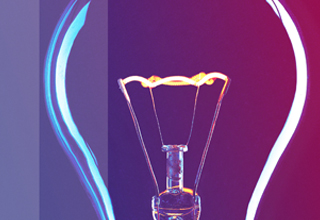It’s interesting that whilst there’s an appetite in some quarters to de-emphasise creative education, business is demanding more creativity.
Some of the reasons that creativity is needed in business are:
- It helps innovation
- Increases adaptability
- Increases productivity
- It’s a way to grow via seeing new possibilities.
For all these reasons, more industries are seeking people who can demonstrate creative thinking.
Not a zero-sum game
Lawyers and creativity are not words that often go together. The legal profession has been slower to adopt the wholesale innovations transforming many other industries. Some might attribute this to the lack of creativity in legal education and therefore the lawyer’s mindset.
“But we’ve always done it this way”, is a common reframe heard in the legal profession – hardly surprising when it’s founded on precedent. However, in many landmark cases lawyers have also been skilled at taking accepted legal arguments and reframing these to give a radically new understanding which changed not only the law but society.
Logical argument grounded in precedent does not need to preclude creativity. What most lawyers, particularly in-house lawyers, need to do every day is very creative. For example, many regulations are still out of step with digital advances so in-house lawyers working in the field of technology must be very creative when applying analogue law on a digital product. Perhaps, it’s not that big a leap for lawyers to embrace creativity!
One prerequisite for kick-starting your creativity is curiosity- so if you are curious - read on to see how.
Asking why
In many instances of creativity in action, the starting point is interrogating the status quo and not accepting the answer – ‘we’ve always done it this way’. This approach has been at the heart of many creative innovations in law.
By asking why lawyers exist and what they are there for, opportunities have been created for others, whether human or machine, to perform many tasks previously reserved for lawyers - thereby freeing up lawyers to focus on those areas that require the strategic application of their judgement.
Connections
Steve Jobs famously remarked that creative people were just better at making connections than others. What often marks out very creative people is their ability to make connections between ideas and concepts that seem unrelated and use these connections to come up with a new idea.
The area of the brain that is used in spontaneous thinking, such as making connection between random ideas, is the area of the brain most activated when your mind wanders in a daydream and so forth. In practice this might mean taking a break and walking away from the screen or reading something completely unconnected during a break. It could be that focusing on something other than the problem at hand might kick-start some thought mechanisms that could create a solution.
Constraint
We may often think of a creative genius as having unfettered time and resources with which to exploit their creativity. In practice that’s rarely the case. Constraints can stimulate more creativity. There’s a reason for the adage, “necessity is the mother of invention.”
In Ed Catmull’s book about Pixar, Creativity Inc., he shares how Toy Story 2 was the creative process most fraught with constraints. However, this film it is still lauded as one of Pixar’s best works.
In the legal profession many of the biggest innovations were started by legal departments such as Dupont and Tyco – corporations whose outside counsel spend was spiralling out of control and who made changes looking at process, efficiency, and use of talent; ideas which are still driving innovation in the legal profession to this day.
Rather than giving a team an open-ended brief with lots of brainstorming time, better results may come from asking them to ideate under strict guidelines and time constraints.
If at first, you don’t succeed…
The importance of failure in creativity is often overlooked. We often think of the creative genius just spontaneously creating a great work of art. The reality is, in most areas of the creative arts, lots of effort, practice and failure is needed before an idea takes off. Sometimes it’s also a happy accident in the process which can become the defining idea.
Lawyers need to embrace having an idea and being able to ideate it and prototype imperfect versions of it to come up with something that works. What is often the barrier to the exploration of creative solutions in the legal profession is not so much having the ideas but being able to move beyond the desire for absolute perfection to explore the ‘messiness’ of new ideas. Ideas which may need more than one iteration to achieve the most workable solutions.
It's only by embracing the failure and learning from it that the creative idea will come to light. Psychologists have found that more creative people can work through failure and learn from it better, whereas those who fail and stop or blame external factors are likely to have a much less creative mindset. As Edison told the reporter who asked him why he was failing to make the lightbulb, “I have not failed. I have just found 10,000 ways that won’t work".













